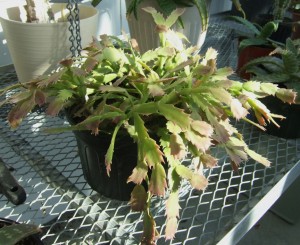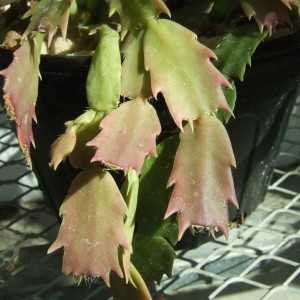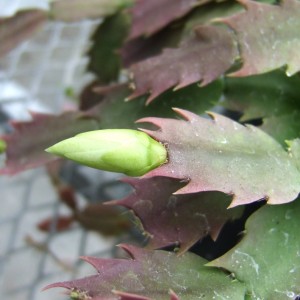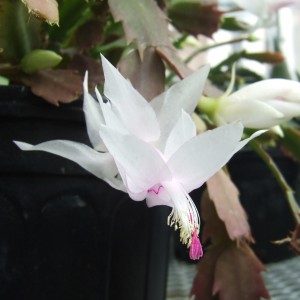Thanksgiving Cactus
Schlumbergera truncata
| Description | Sharing a genus with the more well-known Christmas cactus, the Thanksgiving cactus is an epiphyte cactus, meaning that it takes root on other trees, utilizing the decaying leaf matter for nutrients. It forms long stems that resemble leaves in long chains. |
|---|---|
| Area | The Thanksgiving cactus and other members of the Schlumbergera genus are native to the Organ Mountains in Brazil. |
| Facts |
The Thanksgiving Cactus is a true cactus, though it does not look like one. It is a tropical plant, so it is not as well adapted to dry conditions as other cacti. However, it is a hardy plant that can withstand a good range of temperatures. Though the Thanksgiving cactus and the Christmas cactus are very similar, there are some differences. Thanksgiving cacti have pointed edges on their stem segments, while Christmas cacti have rounded, lobed segments. As the names suggest, the Thanksgiving cacti bloom in November (roughly around Thanksgiving), and Christmas cacti bloom in December (roughly around Christmas Day). The flowers of both plants are large and flashy, ranging from red to white in some varieties. Also, the Christmas cactus is usually a hybrid of Schlumbergera truncata and S. russelliana or S. bridgessi. |
| Reproduction | Both the Thanksgiving and Christmas cacti are considered short-day reproducers. This means that they respond to the shorter days of fall and winter. In order to bloom, these plants require twelve to fourteen hours of complete darkness and cooler nighttime temperatures. Many horticulturalists achieve blooming of these plants through placing the plant in a dark closet for a number of hours. |
| Trivia |
The genus Schlumbergera was named in honor of Frédéric Schlumberger, a famous collecter of cacti in the ninteenth century. The Thanksgiving cactus has a host of folk names, including: False Christmas cactus, Yoke cactus, Crab cactus, and Linkleaf cactus. Historically, is was referred to as Zygocactus. These houseplants have been traditional holiday gifts since the ninteenth century, and remain popular even today. |



